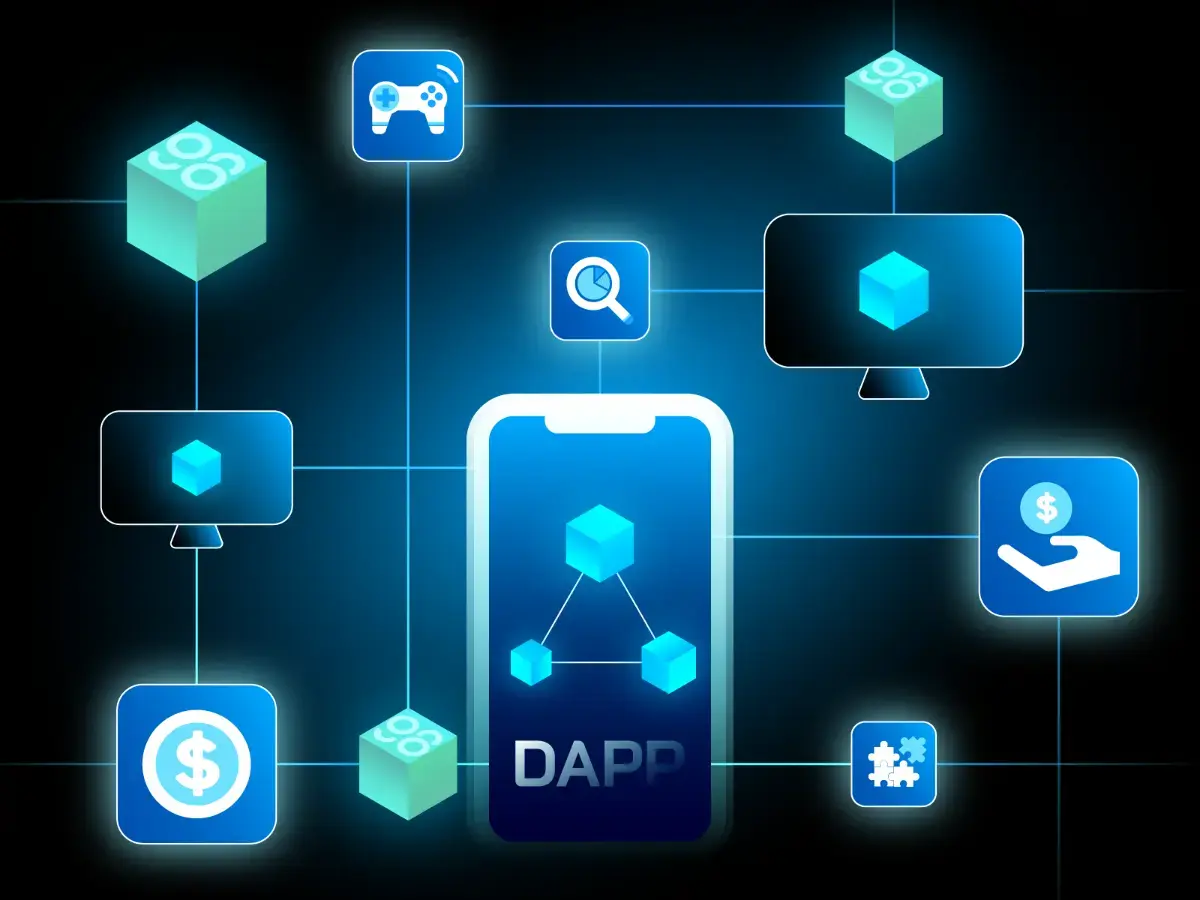Unveiling the Dapp Revolution: Mastering Decentralized Apps for All

With the development of blockchain technology, many projects called Dapps have been born. So what is Dapp? What makes them special? Let’s learn about the characteristics of Dapps through the article below.
What Is Dapp?
Dapps (Decentralized Applications) are decentralized applications that are built on a decentralized network that supports smart contracts and a user-facing frontend. These applications will focus on solving problems in a particular field.
Since decentralized applications are built directly on blockchain platforms, the properties of these decentralized applications will depend on those blockchain platforms. For example, transaction speed, TPS (transactions per second), scalability, stability, etc.
The first decentralized application appeared on Ethereum on April 22, 2016.
Characteristics Of Dapps
Decentralization stands as the hallmark of DApps, ensuring no single entity holds control over user actions within these projects. Moreover, the surge of decentralized applications in the Crypto realm typically embraces open source formats, empowering the community to spawn new projects based on the code of earlier decentralized applications.
Forging a decentralized application necessitates a Blockchain platform equipped with Smart Contracts. Despite widespread misconceptions suggesting any Blockchain can foster an array of applications, only those bolstering Smart Contracts possess the capacity to nurture such developments.
A compelling case in point is Terra. Previously a payment-focused Blockchain until the close of 2020, Terra’s integration of Smart Contracts unleashed a resounding surge within its ecosystem throughout 2021.
Another defining trait of decentralized applications involves a shared developmental trajectory, encompassing stages like idea inception, Whitepaper publication, token formulation, token dispersion, and beyond…
The Categorization Of DApps
If classified by application, DApps can be classified by purpose as: trading, gaming, finance, gambling,…
If classified by blockchain, DApps can be divided into 4 types:
- Type I DApps function on their independent blockchains, such as Bitcoin and Ethereum.
- Type II DApps function as protocols within the Type I blockchain, featuring their own essential tokens for functionality.
- Type III DApps operate utilizing Type II protocols, similarly equipped with essential tokens for their operation, akin to Type II.
DApp Application
DApps are born to solve a specific problem. For example:
- Addressing payment hurdles, platforms like Kado within Terra offer solutions.
- To tackle trading challenges, decentralized exchanges (DEXs) like Uniswap, PancakeSwap, and others exist…
Certain endeavors focus on more conceptual realms, like Oracles facilitating the integration of real-world data into Crypto or initiatives dedicated to infrastructure development…
In the realm of practical application, specific DApps operate within the medical sphere or contribute to charitable causes, exemplified by Angel Protocol within Terra, for instance.
Summary
DApps are a major breakthrough in the development trend of blockchain. With smart contracts, users can create DApps to serve their own needs, or even serve the community, from which they can generate large profits. In general, the number of DApps will continue to increase in crypto, based on its benefits.
READ MORE NEWS ON
Bitcoin | Inflation Deflation Deflation Inflation Cryptocurrencies
* We hope this information will help you in your investment process, but this is not investment advice. Every investment carries risk, especially in this industry, so DYOR before making a decision.






